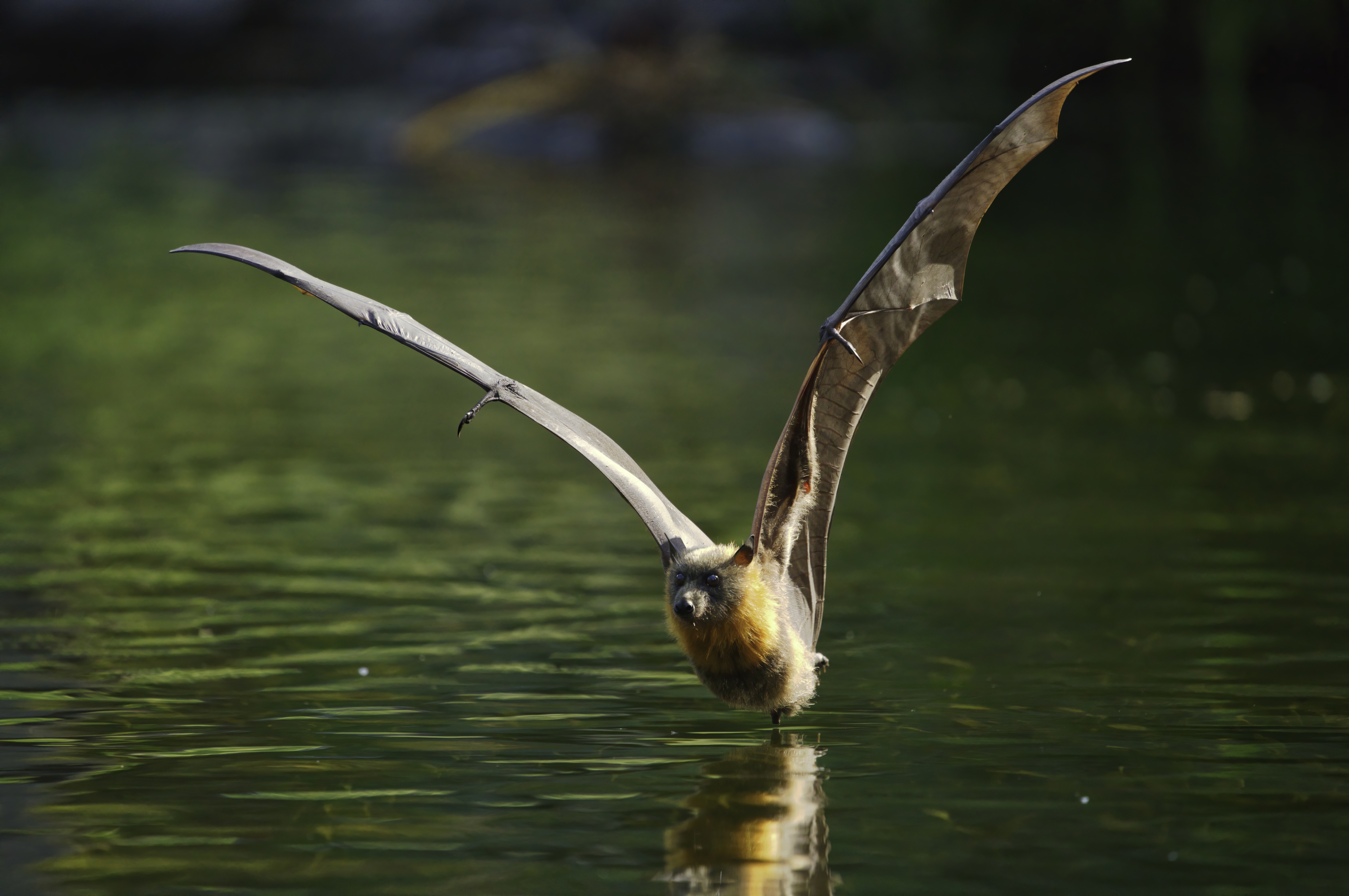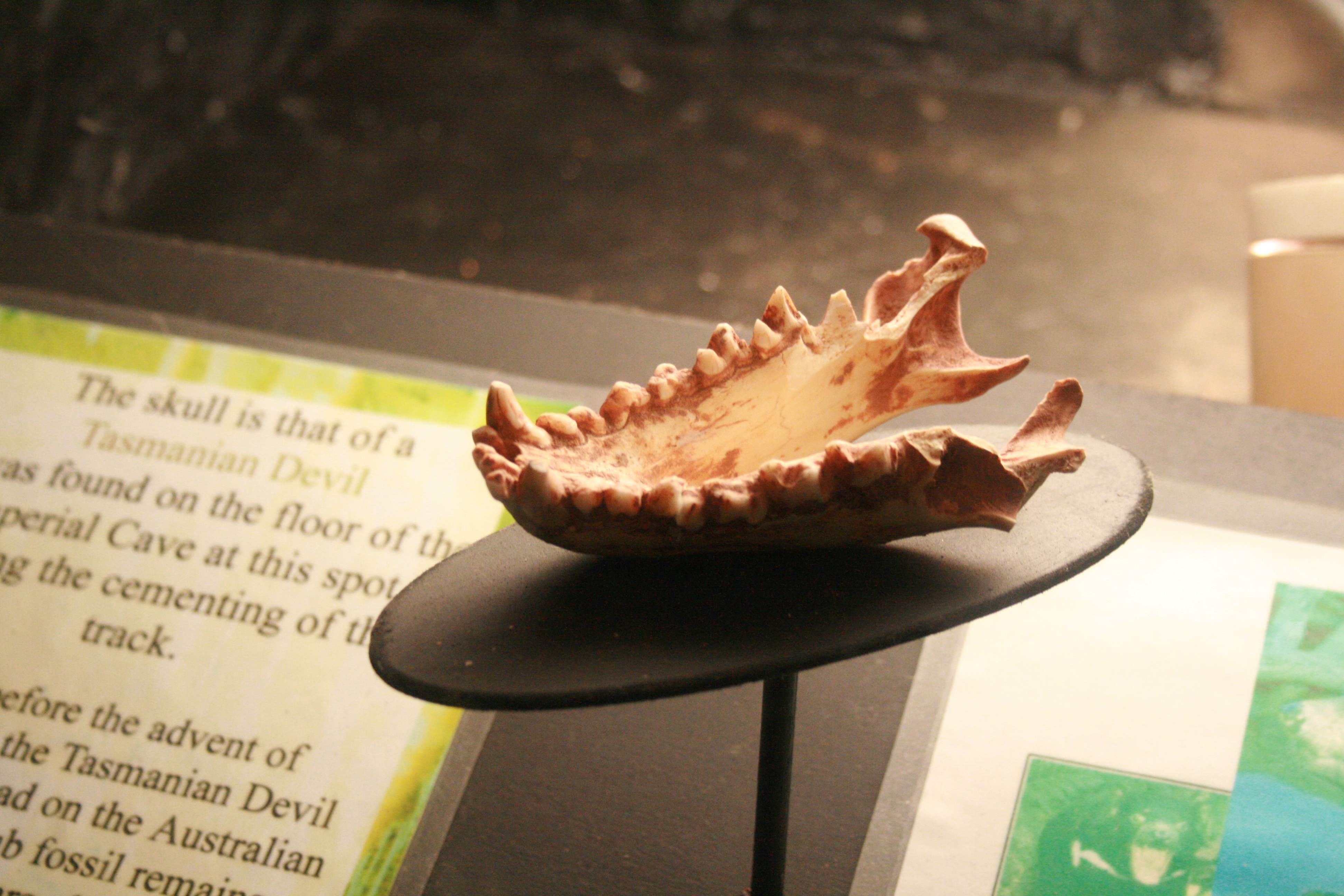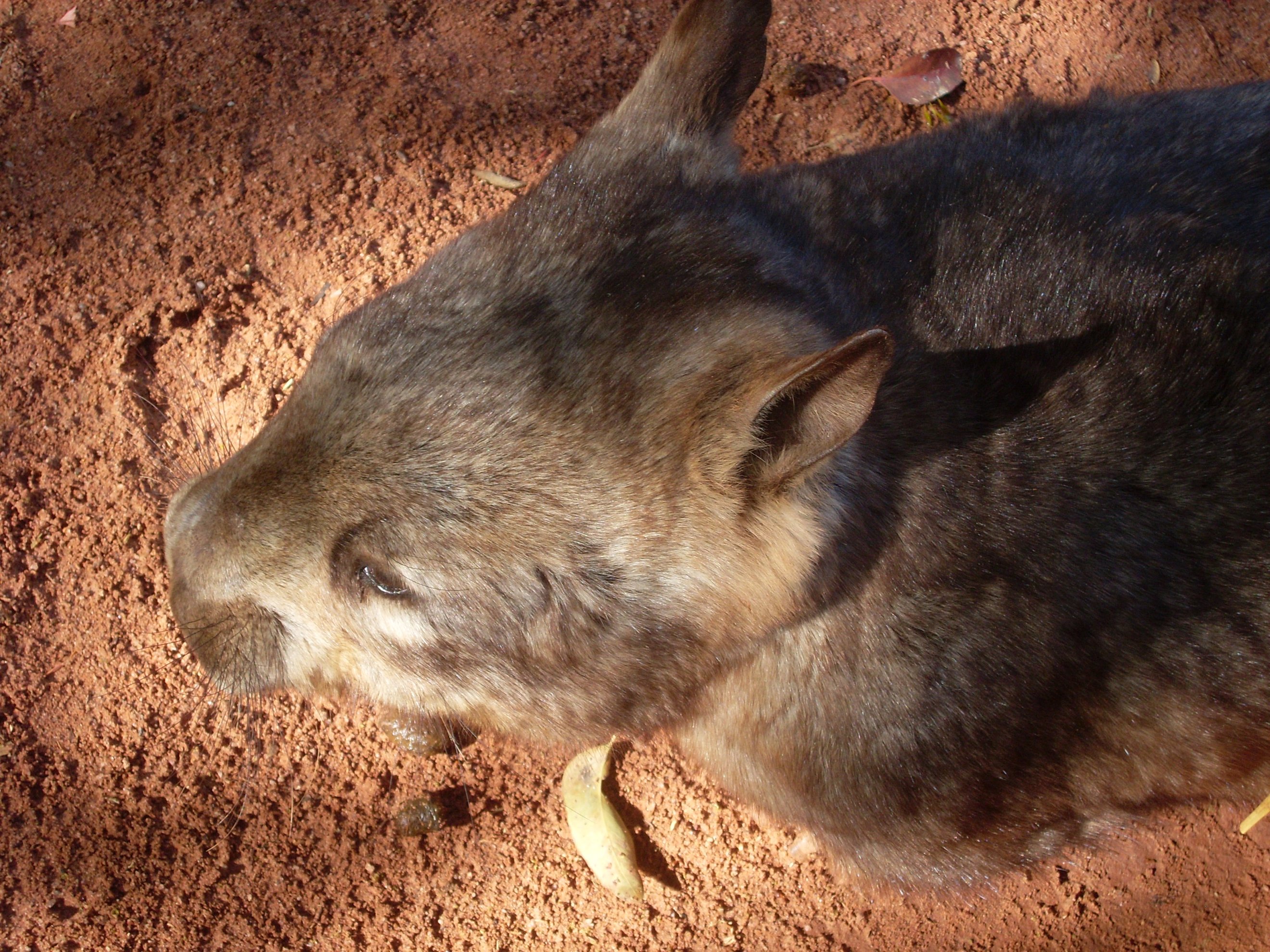|
Caversham Wildlife Park
Caversham Wildlife Park is a wildlife park currently located in Whiteman Park in Western Australia. It is home to several Australian animals including kangaroos, koalas, possums, wallabies, wombats and Tasmanian devils. It was originally located in the locality of Caversham. The Park was bought by a couple, David and Pat, in 1988 and covered 5 acres of land. It was later doubled in size when the couple bought the adjoining property and increased the number of animals. It shifted into Whiteman Park in 2003. Animals and exhibits Marsupials *Red kangaroo (in both their normal and albino morphs) *Western grey kangaroo *Swamp wallaby *Yellow-footed rock-wallaby *Red-necked wallaby *Agile wallaby *Tammar wallaby *Quokka *Common wallaroo *Sugar glider *Squirrel glider *Greater glider *Brush-tailed possum *Rufous bettong *Brush-tailed bettong *Long-nosed potoroo *Koala *Southern hairy-nosed wombat *Common wombat *Tiger quoll *Tasmanian devil Other Mammals *Di ... [...More Info...] [...Related Items...] OR: [Wikipedia] [Google] [Baidu] |
Whiteman, Western Australia
Whiteman, Western Australia is a suburb in the north eastern part of the Perth, metropolitan area in Western Australia. It is the location of Whiteman Park Whiteman Park is a bushland area located north of Perth, Western Australia. The park is in the suburb of Whiteman, in the Swan Valley in the upper reaches of the Swan River. It encompasses the source of Bennett Brook - an important place o ..., which also includes the Caversham Wildlife Park. Notes Suburbs of Perth, Western Australia Suburbs and localities in the City of Swan {{PerthAU-geo-stub ... [...More Info...] [...Related Items...] OR: [Wikipedia] [Google] [Baidu] |
Greater Glider
The greater gliders are three species of large gliding marsupials in the genus ''Petauroides'', all of which are found in eastern Australia. Until 2020 they were considered to be one species, '' Petauroides volans''. In 2020 morphological and genetic differences, obtained using diversity arrays technology, showed there were three species subsumed under this one name. The two new species were named '' Petauroides armillatus'' and ''Petauroides minor''. These species are not closely related to the '' Petaurus'' group of gliding marsupials but instead to the lemur-like ringtail possum, ''Hemibelideus lemuroides'', with which it shares the subfamily Hemibelideinae. The greater gliders are nocturnal and are solitary herbivores feeding almost exclusively on ''Eucalyptus'' leaves and buds. Like their relative, the lemur-like ringtail, the southern greater glider is found in two forms: a sooty brown form and a grey-to-white form. The central greater glider is instead silvery brown, whil ... [...More Info...] [...Related Items...] OR: [Wikipedia] [Google] [Baidu] |
Grey-headed Flying Fox
The grey-headed flying fox (''Pteropus poliocephalus'') is a megabat native to Australia. The species shares mainland Australia with three other members of the genus ''Pteropus'': the little red ''Pteropus scapulatus, P. scapulatus'', spectacled ''Pteropus conspicillatus, P. conspicillatus'', and the black ''Pteropus alecto, P. alecto''. The grey-headed flying fox is the largest bat in Australia. The grey-headed flying fox is endemic to the south-eastern forested areas of Australia, principally east of the Great Dividing Range. Its range extends approximately from Bundaberg, Queensland, Bundaberg in Queensland to Geelong, Victoria, Geelong in Victoria (Australia), Victoria, with outlying colonies in Ingham, Queensland, Ingham and Finch Hatton, Queensland, Finch Hatton in the north, and in Adelaide, South Australia, Adelaide in the south. In the southern parts of its range it occupies more extreme latitudes than any other ''Pteropus'' species. As of 2021 the species is listed as ... [...More Info...] [...Related Items...] OR: [Wikipedia] [Google] [Baidu] |
Spectacled Flying Fox
The spectacled flying fox (''Pteropus conspicillatus''), also known as the spectacled fruit bat, is a megabat that lives in Australia's north-eastern regions of Queensland. It is also found in New Guinea and on the offshore islands including Woodlark Island, Alcester Island, Kiriwina, and Halmahera. The spectacled flying fox was listed as a threatened species under the Environment Protection and Biodiversity Conservation Act 1999. They were considered vulnerable due to a significant decline in numbers as a result of loss of their prime feeding habitat and secluded camp sites. It has also been reported that spectacled flying foxes skim over the surface of water to drink and are sometimes eaten by crocodiles. The species was classified as endangered by the IUCN in 2020. In February 2019 the Australian government upgraded the threatened status from vulnerable to endangered, after almost a third of the bat population died in a severe heatwave in Queensland in late 2018. Descriptio ... [...More Info...] [...Related Items...] OR: [Wikipedia] [Google] [Baidu] |
Red Fox
The red fox (''Vulpes vulpes'') is the largest of the true foxes and one of the most widely distributed members of the Order (biology), order Carnivora, being present across the entire Northern Hemisphere including most of North America, Europe and Asia, plus parts of North Africa. It is listed as least concern by the IUCN. Its range has increased alongside human expansion, having been Foxes in Australia, introduced to Australia, where it is considered harmful to native mammals and bird populations. Due to its presence in Australia, it is included on the list of the List of the world's 100 worst invasive species, "world's 100 worst invasive species". The red fox originated from smaller-sized ancestors from Eurasia during the Middle Villafranchian period, and colonised North America shortly after the Wisconsin glaciation. Among the true foxes, the red fox represents a more progressive form in the direction of Carnivore, carnivory. Apart from its large size, the red fox is disting ... [...More Info...] [...Related Items...] OR: [Wikipedia] [Google] [Baidu] |
Dingo
The dingo (''Canis familiaris'', ''Canis familiaris dingo'', ''Canis dingo'', or ''Canis lupus dingo'') is an ancient (Basal (phylogenetics), basal) lineage of dog found in Australia (continent), Australia. Its taxonomic classification is debated as indicated by the variety of scientific names presently applied in different publications. It is variously considered a form of domestic dog not warranting recognition as a subspecies, a subspecies of dog or wolf, or a full species in its own right. The dingo is a medium-sized Canis, canine that possesses a lean, hardy body adapted for speed, agility, and stamina. The dingo's three main coat colourations are light ginger or tan, black and tan, or creamy white. The skull is wedge-shaped and appears large in proportion to the body. The dingo is closely related to the New Guinea singing dog: their lineage split early from the lineage that led to today's domestic dogs, and can be traced back through the Maritime Southeast Asia to Asia. ... [...More Info...] [...Related Items...] OR: [Wikipedia] [Google] [Baidu] |
Tasmanian Devil
The Tasmanian devil (''Sarcophilus harrisii'') (palawa kani: purinina) is a carnivorous marsupial of the family Dasyuridae. Until recently, it was only found on the island state of Tasmania, but it has been reintroduced to New South Wales in mainland Australia, with a small breeding population. The size of a small dog, the Tasmanian devil became the largest carnivorous marsupial in the world following the extinction of the thylacine in 1936. It is related to quolls, and distantly related to the thylacine. It is characterised by its stocky and muscular build, black fur, pungent odour, extremely loud and disturbing screech, keen sense of smell, and ferocity when feeding. The Tasmanian devil's large head and neck allow it to generate among the strongest bites per unit body mass of any extant predatory land mammal. It hunts prey and scavenges on carrion. Although devils are usually solitary, they sometimes eat and defecate together in a communal location. Unlike most other da ... [...More Info...] [...Related Items...] OR: [Wikipedia] [Google] [Baidu] |
Spotted-tailed Quoll
The tiger quoll (''Dasyurus maculatus''), also known as the spotted-tail quoll, the spotted quoll, the spotted-tail dasyure, native cat or the tiger cat, is a carnivorous marsupial of the quoll genus ''Dasyurus'' native to Australia. With males and females weighing around , respectively, it is the world's second-largest extant carnivorous marsupial, behind the Tasmanian devil. Two subspecies are recognised; the nominate is found in wet forests of southeastern Australia and Tasmania, and a northern subspecies, ''D. m. gracilis'', is found in a small area of northern Queensland and is endangered. Taxonomy The tiger quoll is a member of the family Dasyuridae, which includes most carnivorous marsupial mammals. This quoll was first described in 1792 by Robert Kerr, the Scottish writer and naturalist, who placed it in the genus ''Didelphis'', which includes several species of American opossum. The species name, ''maculatus'', indicates this species is spotted. Two subspecies are r ... [...More Info...] [...Related Items...] OR: [Wikipedia] [Google] [Baidu] |
Common Wombat
The common wombat (''Vombatus ursinus''), also known as the coarse-haired wombat or bare-nosed wombat, is a marsupial, one of three extant species of wombats and the only one in the genus ''Vombatus''. The common wombat grows to an average of long and a weight of . Taxonomy The common wombat was first described by George Shaw in 1800. There are three extant subspecies: *Bass Strait (common) wombat (''V. u. ursinus''), the nominate form, was once found throughout the Bass Strait Islands, but is now restricted to Flinders Island to the north of Tasmania. Its population was estimated at 4,000 in 1996 and is listed as vulnerable by the Environment Protection and Biodiversity Conservation Act 1999 and IUCN Red List. *Hirsute wombat (''V. u. hirsutus'') is found on the Australian mainland. *Tasmanian wombat (''V. u. tasmaniensis'') is found in Tasmania. It is smaller than ''V. u. hirsutus''. Hackett's wombat (''V. hacketti'') is an extinct species of genus ''Vombatus'', inhabiti ... [...More Info...] [...Related Items...] OR: [Wikipedia] [Google] [Baidu] |
Southern Hairy-nosed Wombat
The southern hairy-nosed wombat (''Lasiorhinus latifrons'') is one of three extant species of wombats. It is found in scattered areas of semiarid scrub and mallee from the eastern Nullarbor Plain to the New South Wales border area. It is the smallest of all three wombat species. The young often do not survive dry seasons. It is the state animal of South Australia. Among the oldest southern hairy-nosed wombats ever documented were a male and a female from Brookfield Zoo just outside Chicago. Their names were Carver, who lived to be 34, and his mother, Vicky, who lived to be 24. In South Australia in 2010, a domesticated wombat named Wally was also reported as having reached the age of 34. Hamlet, a wombat at the Toronto Zoo, similarly died at age 34. Taxonomy English naturalist Richard Owen described the species in 1845. There are three synonyms: * ''Phascolomys lasiorhinus'' Gould, 1863 * ''Lasiorhinus mcoyi'' Gray, 1863 * ''Phascolomys latifrons'' Owen, 1845 Description Th ... [...More Info...] [...Related Items...] OR: [Wikipedia] [Google] [Baidu] |
Koala
The koala or, inaccurately, koala bear (''Phascolarctos cinereus''), is an arboreal herbivorous marsupial native to Australia. It is the only extant representative of the family Phascolarctidae and its closest living relatives are the wombats. The koala is found in coastal areas of the mainland's eastern and southern regions, inhabiting Queensland, New South Wales, Victoria, and South Australia. It is easily recognisable by its stout, tailless body and large head with round, fluffy ears and large, spoon-shaped nose. The koala has a body length of and weighs . Fur colour ranges from silver grey to chocolate brown. Koalas from the northern populations are typically smaller and lighter in colour than their counterparts further south. These populations possibly are separate subspecies, but this is disputed. Koalas typically inhabit open ''Eucalyptus'' woodland, as the leaves of these trees make up most of their diet. Because this eucalypt diet has limited nutritional and calor ... [...More Info...] [...Related Items...] OR: [Wikipedia] [Google] [Baidu] |
Long-nosed Potoroo
The long-nosed potoroo (''Potorous tridactylus'') is a small, hopping, gerbil-like mammal native to forests and shrubland of southeastern Australia and Tasmania. A member of the rat-kangaroo family (Potoroidae), it lives alone and digs at night for fungi, roots, or small insects. It is also a marsupial (like kangaroos) and carries its young in a pouch. The long-nosed potoroo is threatened by habitat loss and introduced species such as cats or foxes. There are two subspecies: ''P. t. tridactylus'' on mainland Australia, and ''P. t. apicalis'' on Tasmania, with lighter fur. At first glance, the long-nosed potoroo with its pointed nose and grey-brown fur looks very much like a bandicoot — that is, until it hops away with its front feet tucked into its chest, revealing its close relationship with the kangaroo family. The long-nosed potoroo exhibits many morphological specializations such as an elongated pointed rostral region (nose), erect ears, large eyes, claws for digging, and lo ... [...More Info...] [...Related Items...] OR: [Wikipedia] [Google] [Baidu] |



.jpg)





